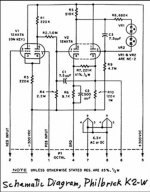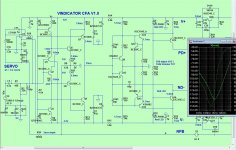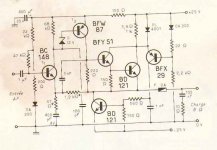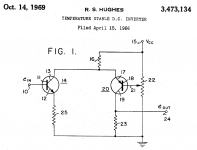Googling 'current mirror inventor' and 'current mirror invention' has so far got me nowhere.
Same here, the improvements it seems were patentable but the basic idea was simply a given. BTW I also had no luck on the prior art citations on either patent some of which went back to 1957, I had hoped Widler had at least cited the original two transistors with one diode connected even if it was just a literature citation. I'll be seeing Barrie Gilbert soon I'll ask him if he knows, he knows Wilson well (not sure he's still around). Derek Bowers is also a good source he seems to be a history buff on circuit stuff and has looked at several "new" ideas of mine and pointed out 20yr. old prior art.
In a way it's strange the Sziklai and Darlington have clear origins and "owners". I also think Solomon's attribution to Thomson was possibly due to the fact that all those guys hung out at the same bars and traded ideas or things they saw on napkins.
Last edited:
I actually have one.was at one time (may still be) in the original box!
Grey plastic base, two dual triodes, iirc.
_-_-
I've got a box of them. The gray one is actually from a competitor. The original ones are beige/yellowish and cannot be opened. The gray ones have srews and can be opened.
Jan
Attachments
I've got nothing solid except vague recollections and "feeling", but I suspect that the "folded cascode" was used fairly regularly in VHF and up applications? It may be that its application to audio freq amps, such as this one, may in fact be unique. Hope I am not barking up the wrong tree?
_-_-
Nope , Member Vzaichenko uses the single ended folded cascode approach
with current sources.
Of course , I went with a fully symmetric design (I am sold on those).
I mixed a folded cascode CFA front end with Sam Groner's - TIS (folded transimpedance stage).
A new audio amplifier topology with push-pull transimpedance stage - Part 1: Introduction | EE Times
By Vzaichenko's success on the "simpler" input stage , the
CFA/symmetric should be pretty good (Below).
OS
Attachments
Here are two more early papers I found showing audio power amps with differential pair input stage:
http://updatemydynaco.com/HistoricDocuments/BrayDiffPair.pdf
http://updatemydynaco.com/HistoricDocuments/FreylingDiffPair.pdf
The Bray paper shows a date of August 1967, so most probably came after the Locanthi T-Amp paper, which was dated in January of 1967.
Unfortunately, the Freyling paper doesn't have a date...only my memory that I collected this paper in the late 60's or early 70's. It references a paper from 1962, so has to be later than that.
A date of march 1966 for the Freyling paper appears in this page :
Patent EP0156410A1 - Montage amplificateur - Google Patents
Non-Patent CitationsReference
1 *DELFT PROGRESS REPORT, ELECTRICAL, ELECTRONIC AND INFORMATION ENGINEERING, Series B, vol. 1, 1975, pages 31-35, NL; K.B.KLAASSEN: "Common-mode filter"
2 *MOTOROLA SEMICONDUCTOR PRODUCTS INC., Application Note: AN-209, March 1966, Imperial Litho, US; N.FREYLING: "A 4-watt wide-band solid-state amplifier"
* Cited by examiner
Nope , Member Vzaichenko uses the single ended folded cascode approach
with current sources.
<snip>
OS
I'm talking 1950s and early 1960's commercial/industrial/military designs for RF and maybe instrumentation. Not consumer gear.
I'm talking 1950s and early 1960's commercial/industrial/military designs for RF and maybe instrumentation. Not consumer gear.
No, you were right. They are pretty rare for audio.
I could not find any in my whole 3K schematic collection.
Only 3 designs on the forum in the last 8 years , as well.
We are only now exploring these "oddball" designs
OS
Folded cascodes in audio schematics
This is the first folded cascode used in audio I met :
[FONT=arial,helvetica]High-quality Tone ControlJ N EllisAug 1973 p378
[/FONT]
No, you were right. They are pretty rare for audio.
I could not find any in my whole 3K schematic collection.
Only 3 designs on the forum in the last 8 years , as well.
We are only now exploring these "oddball" designs.
OS
This is the first folded cascode used in audio I met :
[FONT=arial,helvetica]High-quality Tone ControlJ N EllisAug 1973 p378
[/FONT]
We are only now exploring these "oddball" designs.
OS
Sorry for being slightly off topic here, but as I was out the loop on what was happening with DIY for about 20 years is there a timeline for when these sort of techniques migrated from RF down to audio, at least for the hobbyist? I assume there a correlation with LT-spice becoming available and PCs being powerful enough to not require an overnight run for a sim.
I would be interested to hear of examples.
Where were the volume and balance controls?
Where was the input select switching?
Directly on the input of the power amp.
I had a Pioneer receiver back in '75 or 75 that I bought second hand with this arrangement. IIRC it was rated at 4 or 5 watts output per channel.
The other trick was to use a two or three transistor pre-amp but switch the feedback networks around it so it doubled as a line stage or an RIAA equalizer - see Mullard ap notes for example and many commercial amps from the '70's.
Well I am interested in identifying the folded cascode in non-consumer designs, predating the ones so far posted.
I seem to recall the first time I stumbled into it was John Curl's JFET preamp... I think.
I recall looking at it like "Nipper" the RCA dog looks at that phonograph horn!!
_-_-
Hey CURL, where did you get that folded thing from??
I seem to recall the first time I stumbled into it was John Curl's JFET preamp... I think.
I recall looking at it like "Nipper" the RCA dog looks at that phonograph horn!!
_-_-
Hey CURL, where did you get that folded thing from??
Well I am interested in identifying the folded cascode in non-consumer designs, predating the ones so far posted.
Non-consumer you would have to go back a long time, Harris used them in early 70's.
Nope , Member Vzaichenko uses the single ended folded cascode approach
with current sources.
Of course , I went with a fully symmetric design (I am sold on those).
I mixed a folded cascode CFA front end with Sam Groner's - TIS (folded transimpedance stage).
A new audio amplifier topology with push-pull transimpedance stage - Part 1: Introduction | EE Times
By Vzaichenko's success on the "simpler" input stage , the
CFA/symmetric should be pretty good (Below).
OS
Here is what OS referred to, if somebody's interested:
Single ended folded cascode approach with current sources
Live prototype measurements in combination with my non-switching OPS section are also there (spectrums: 20V RMS @ 8 ohm load).
Here is a very simple implementation with Lateral FETs at the output, also with some measurements:
VLatFET+
Common base stages give a lot of advantages if used properly.
Cheers,
Valery
Well I am interested in identifying the folded cascode in non-consumer designs, predating the ones so far posted.
I seem to recall the first time I stumbled into it was John Curl's JFET preamp... I think.
I recall looking at it like "Nipper" the RCA dog looks at that phonograph horn!!_-_-
Hey CURL, where did you get that folded thing from??
Do you refer to the "Output amplifier circuit" of the schematics below ?
The bipolar transistors do not work to make folded cascodes with the input stage.
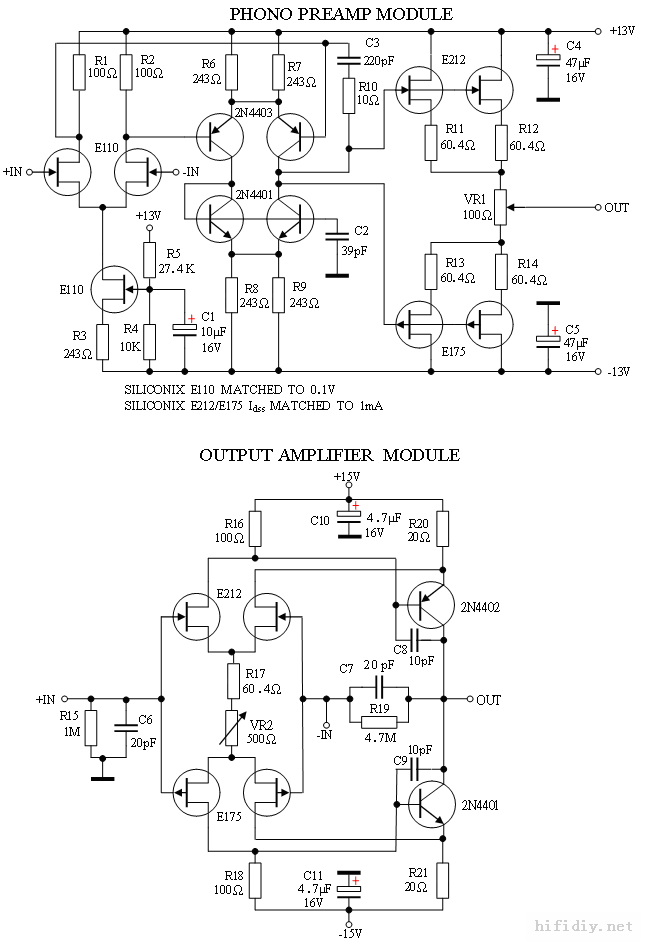
no, I referred to John Curl's "original" phono headamp (iirc) design, not sure if the folded cascode was used in the line stage or not. Perhaps I am not understanding which reference was which or whose it is/was??
Scott, I was thinking again "grounded grid" with tubes, but I'm curious to see what Harris did - got anything to show?
_-_-
Scott, I was thinking again "grounded grid" with tubes, but I'm curious to see what Harris did - got anything to show?
_-_-
Scott, I was thinking again "grounded grid" with tubes, but I'm curious to see what Harris did - got anything to show?
_-_-
These basic designs date from the 70's
https://www.westfloridacomponents.com/mm5/graphics/ds5/HA2-2525-5.pdf
- Status
- This old topic is closed. If you want to reopen this topic, contact a moderator using the "Report Post" button.
- Home
- Amplifiers
- Solid State
- The Kiwanuka article in Linear Audio 11: Douglas Self
